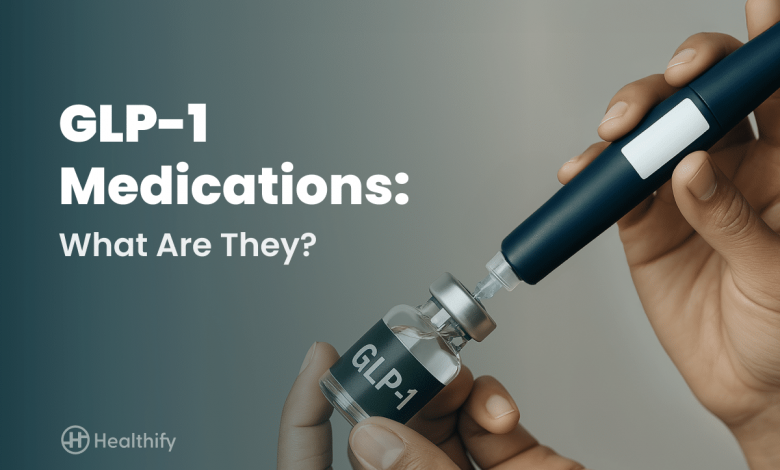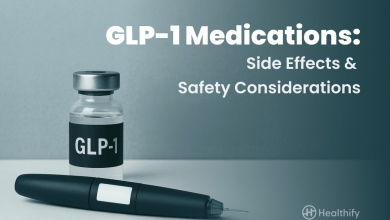Understanding GLP-1 Medications: A Comprehensive Guide

Your Guide to the Science Behind the Buzz
Glucagon-like peptide-1, or GLP-1, might sound like another obscure medical acronym, but over the past few years, it has become a buzzword in clinics and dinner table conversations. Why? Because of what it can do and who it’s doing it for.
GLP-1 is a hormone naturally produced in our intestines when we eat. It’s part of a family of hormones called incretins, and its job is to help regulate blood sugar by:
- Stimulating insulin secretion
- Suppressing glucagon (a hormone that raises blood sugar)
- Slowing gastric emptying, which keeps us fuller for longer
- Acting on the brain to reduce appetite
Originally, GLP-1 receptor agonists (GLP-1 RAs) were developed as treatments for type 2 diabetes, a condition marked by insulin resistance and poor blood sugar control. Over time, scientists noticed an interesting side effect: people were losing weight and not just a little. The mechanism made sense: less hunger, slower digestion, better metabolic balance.
This shifted the focus of GLP-1 medications from diabetes management to obesity treatment and eventually to cardiovascular protection and potential neurodegenerative disease therapy.
Popular GLP-1 Medications:
How it works: Mimics the GLP-1 hormone to stimulate insulin release, slow gastric emptying, and suppress appetite
Weight effects: Moderate weight loss; typically around 5–8% of body weight
- Semaglutide (Ozempic, Wegovy, Rybelsus): Weekly injection or daily oral tablet
How it works: Similar to liraglutide, but with a longer half-life, allowing once-weekly dosing
Weight effects: Significant up to 15% body weight loss in clinical trials (Wegovy)
- Dulaglutide (Trulicity): Weekly injection
How it works: Activates GLP-1 receptors to improve insulin secretion and glucose control
Weight effects: Moderate; average of 3–5 kg weight loss in most users
- Tirzepatide (Mounjaro): Dual-acting, weekly injection
How it works: A dual agonist activates both GLP-1 and GIP receptors, enhancing insulin release and appetite suppression more powerfully than GLP-1 alone
Weight effects: Industry-leading trials show up to 20–22% body weight reduction, even in non-diabetics
These meds support better blood sugar control, curb appetite, and promote significant fat loss, especially when paired with healthy habits.
GLP-1 vs Traditional Medications
| Feature | GLP-1 Medications | Traditional Diabetes/Weight-Loss Meds |
| Action | Mimic natural hormones to control appetite and blood sugar | Often target insulin production or fat absorption |
| Weight Loss | Significant, sustained loss | Usually mild or incidental |
| Cardio Benefits | Some have proven heart protection | Limited in older meds |
| Administration | Injection or oral | Oral tablets (mostly) |
| Hypoglycemia Risk | Low (unless used with insulin) | Higher with sulfonylureas or insulin |
What Can GLP-1 Medications Do?
✅ Sustained weight loss
✅ Reduced appetite and cravings
✅ Improved insulin sensitivity
✅ Cardiovascular protection (in some cases)
✅ Lower HbA1c levels in diabetics
Potential Side Effects:
Like all medications, GLP-1s can come with some side effects:
Nausea or vomiting (usually temporary)
Constipation or diarrhea
Mild fatigue or dizziness
Rarely, pancreatitis or gallbladder issues
*Always consult your healthcare provider before starting any new medication.*
Final Word:
GLP-1 receptor agonists are game changers for those managing diabetes or obesity. While not a magic bullet, they offer powerful tools in a structured, doctor-guided plan. If you’ve hit a plateau or want to explore medication-supported weight loss, it might be time to have a conversation with your doctor.
Credits
Written By Mallika Singh



